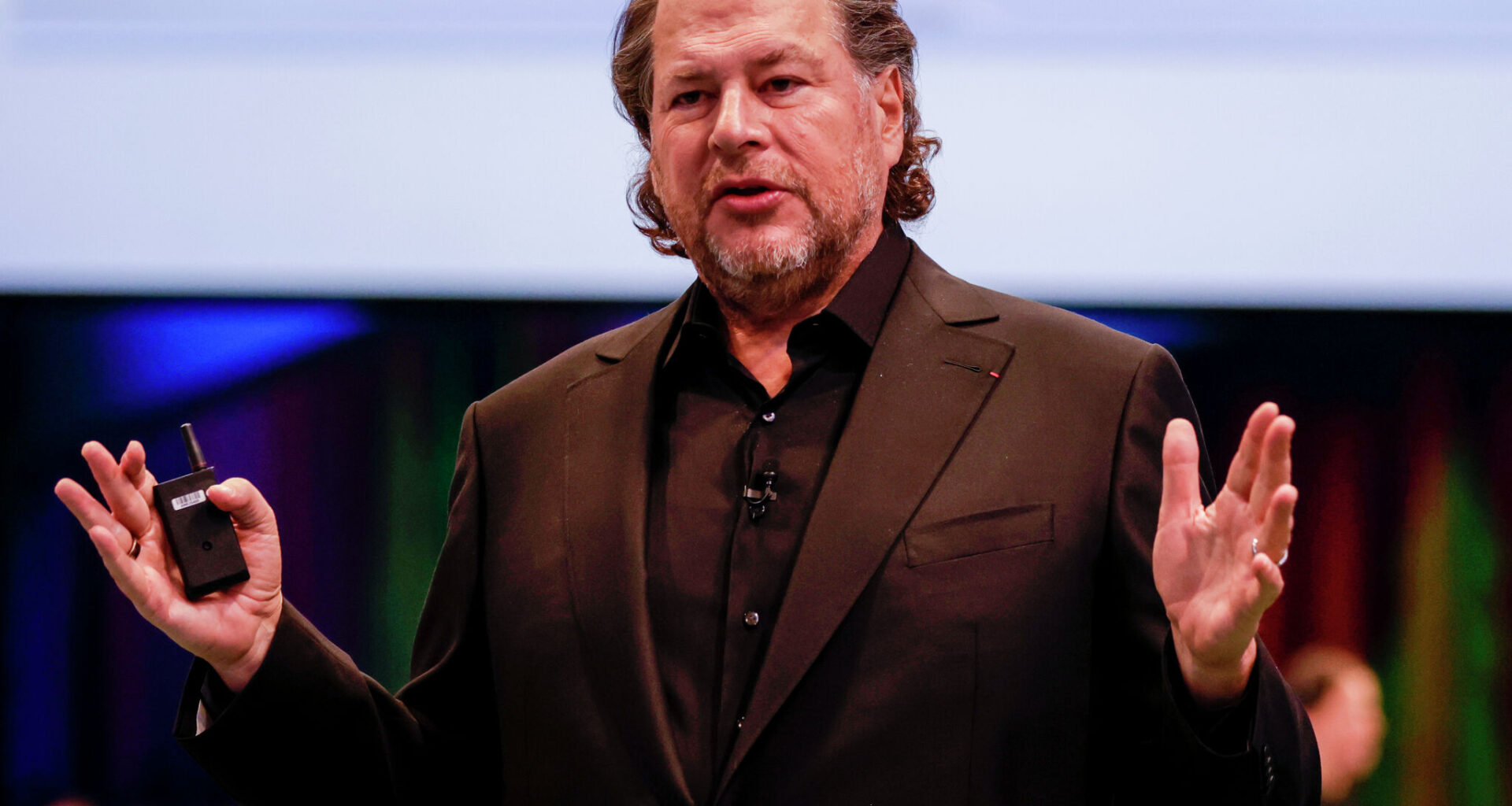Salesforce CEO Marc Benioff speaks to thousands at the Moscone South Hall during Dreamforce 2024 in San Francisco.
Brontë Wittpenn/S.F. Chronicle
Like a lot of Bay Area residents who live or work in San Francisco, I’ve spent the weekend in a stupor, mumbling, “What the hell happened to Marc Benioff?”
Speaking by phone from his private plane to a New York Times reporter Friday, he pledged “I fully support” President Donald Trump and said he thought National Guard troops should be deployed in San Francisco. One of our city’s great benefactors, coming up with the worst idea.
• CEO’s sentiments: Marc Benioff says Trump should send National Guard to San Francisco
• ‘The only solution’: Elon Musk backs call to deploy federal troops to San Francisco
Article continues below this ad
But I’m especially stunned based on what I’ve found in the Chronicle archive. His family’s San Francisco ties go back generations. And he was deeply inspired by his grandfather, Marvin Lewis, a civic leader who made sure he never lost the pulse of San Francisco.
Each morning beginning in the 1940s, the San Francisco supervisor (and “father of Bay Area Rapid Transit”) would meet his friend and business leader Cyril Magnin near their Sea Cliff homes at the corner of 29th Avenue and California Street, and walk more than 5 miles to work in the Financial District.
They passed through Pacific Heights and by Grace Cathedral, but also near casual diners and working-class dives, where they’d stop in and strike up conversations with strangers.
Feb. 6, 1986: Former San Francisco Supervisor Marvin Lewis, standing second from right, is honored for his pioneering work for the Bay Area Rapid Transit system. His grandson Marc Benioff, seated at right, looks on.
Mike Maloney/S.F. Chronicle
When I shared this story with Benioff in 2019, bringing Chronicle clippings and photos to his own Sea Cliff residence, the Salesforce founder already knew the details. Lewis, a trial lawyer and man-of-the-people politician who died in 1991, had chaperoned his grandson Benioff through the streets of San Francisco too.
Article continues below this ad
“A local leader was someone who had their career, but also had their civic interests, their spiritual interests,” Benioff told me. “I think this is a big message that we can’t really silo ourselves. And, you know, that’s very much what CEOs do. They focus on their shareholders. But you can’t. You have to focus on your stakeholders.”
How did the city’s “good” billionaire, who personally and through business has donated more money to San Francisco causes than anyone in history, go full Trump, openly supporting a military incursion in the city?
I can’t answer that question. One clue might lie in Prop C, a 2018 city ballot measure supported by Benioff to steeply tax businesses to help unhoused residents. As the city’s largest private employer, he stood to lose the most financially, but called it the right thing to do. And seven years later, he sees little visible change, this week assembling his own security force of off-duty police officers to patrol the blocks around his Dreamforce mega-conference at Moscone Center.
But it’s an incredible leap from “San Francisco is squandering an opportunity” to “We need the military on our streets.” What would be the best-case scenario of these military forces? Moving the homeless at gunpoint where Benioff’s guests don’t have to see them? Intimidating our least fortunate neighbors so they’re afraid to leave their homes?
We are as far away from a need for military intervention as we were in the 1970s, when the homicide rate was more than four times higher than the current modern low. Or the 1940s, when the city’s Skid Row rested in the exact spot where Dreamforce attendees are arriving now. Troops are a means to stoke fear and violent confrontation in the name of a “liberal cities are violent hellholes” crisis that simply doesn’t exist.
Article continues below this ad
My full-time job since 2020 has involved exploring San Francisco and passing on my finds to Chronicle readers, but it also serves as a Lewis-style health check on the city. My last three San Francisco assignments sent me biking 38 miles around the perimeter of the city, visiting random block parties in four neighborhoods, and following a Tenderloin artist and marathon runner who lives in supportive housing.
While downtown remains in need of a reinvention and the drug crisis continues, the neighborhoods are thriving. The city is teeming with new parks, public art and good people who are willing to fight to make our next chapter even better.
Lewis never lost touch with San Francisco’s streets. Herb Caen wrote in 1945 about Lewis and Magnin stopping in Gene Compton’s Cafeteria — future home of a transgender rights milestone — and running into California Gov. Earl Warren. (“Everybody’s nuts around here this morning,” a confused cafeteria regular quipped.)
Lewis altered our transit future. Magnin’s philanthropy changed the city’s art scene. How many of their best ideas came walking and talking as they crossed the city, running into fellow citizens and allowing themselves to fall in love with San Francisco a little more every day?
Which brings us to my solution. Let’s call it the Marc Benioff come-back-to-your-senses challenge.
Article continues below this ad
Take that same walk your grandfather did. Do it once a month with a different San Franciscan, starting with Mayor Daniel Lurie, who since his 2024 election appears to have been walking the streets of the city (and posting on social media) day and night nonstop.
Don’t look for easy answers. Don’t stop mingling with the stakeholders. And keep looking to the example of Lewis. This city is a complicated place, but I’ve found two truths: The Golden Age is a myth and San Francisco is never “over.”
The city’s future improves through hard work at street level, not through troops and the whims of Trump.

